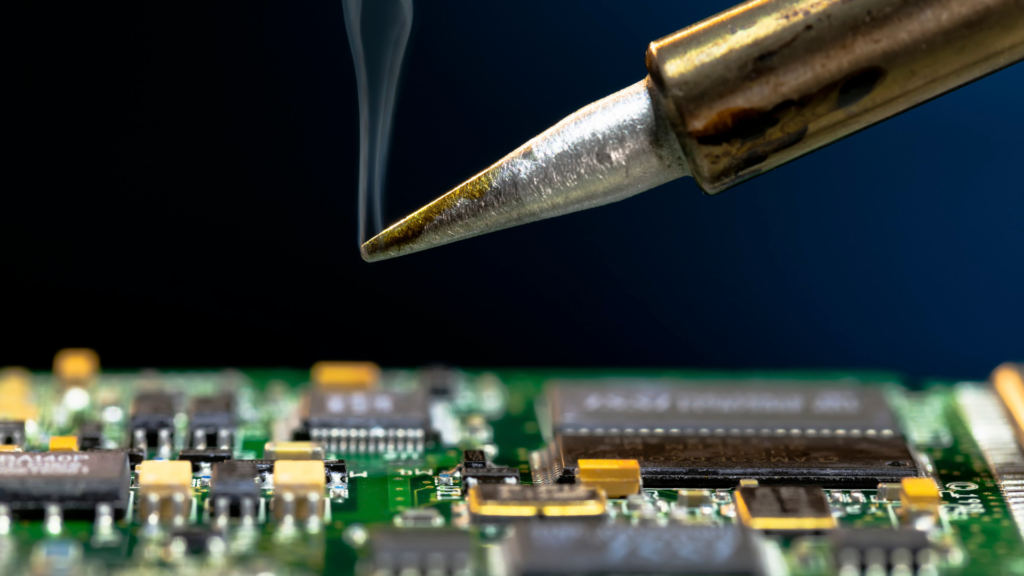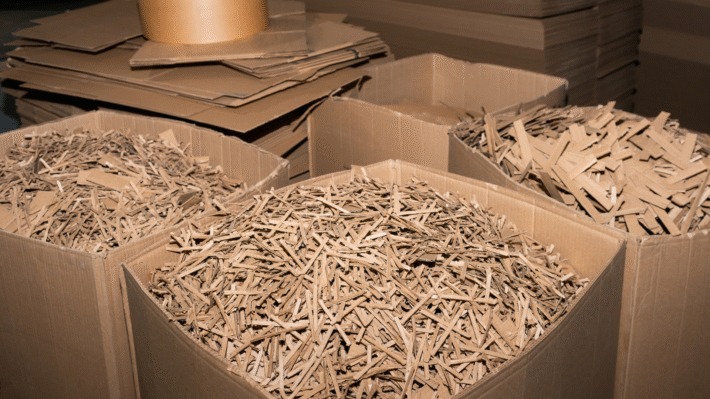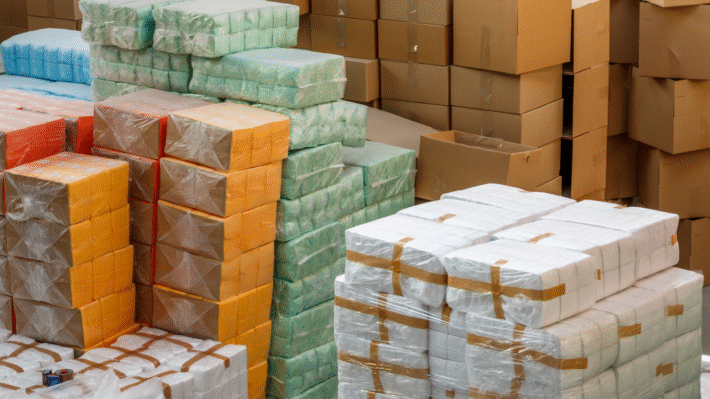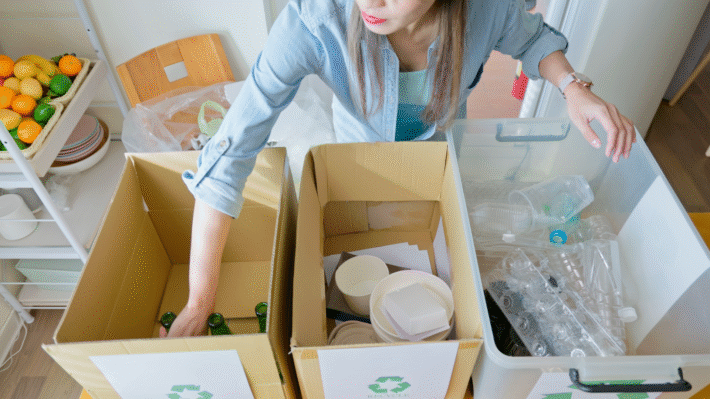Creating Circularity in Electronics Circuit Board Waste Supply Chain

Welcome to our joyous exploration of the dynamic and ever-evolving world of electronics circuit board waste! Today, we dive head-first into an ocean of opportunity, seeking ways to create a circular supply chain that separates and reprocesses rare earth elements in microchips effectively. As we voyage through this crucial topic, we’ll unravel the mysteries of E-Waste and the scarcity of Rare Earth Elements (REEs). We aim to illuminate the incredible potential held within the complex network of precious elements that power our tech-driven lives. Together, we’ll unearth strategies and advancements that transform our linear consumption models into a thriving circular ecosystem. So tighten your seatbelts, as we journey toward closing the loop on electronic waste, and gear up for an adventure like no other in the realm of sustainable electronics!
Together we can reshape the future. Embrace the journey!
Understanding Electronics Circuit Board Waste
Dig into your drawer or peek behind your desk. See that old, unused gadget collecting dust? Yep, your ancient cell phone or your dinosaur-era music player. That, my friend, is a prime example of what we call e-waste. But it’s more than just an eyesore or a space eater.
The Problem of E-Waste
What is E-Waste?
E-waste, short for electronic waste, encompasses discarded electronic devices or components. Picture those old televisions, worn-out batteries, even those ancient first-generation video game systems. They’re all part of a mountain of e-waste.
Why E-Waste is a Big Deal
Why should you care about e-waste? To start, e-waste represents a staggering 50 million tons of waste every year. It’s as if every person in Texas decided to toss out 18 laptops every day! Secondly, e-waste possesses harmful substances like mercury, lead, and cadmium. These may potentially seep into our soils and waters, menacing animal and human health. Lastly, buried in that e-waste heap are precious resources that, if treated right, can find their way back into the supply chain.
The Role of Rare Earth Elements (REEs)
What are REEs?
Now, what are Rare Earth Elements (REEs) and why are they so (excuse my pun) darn rare? Rare Earth Elements like neodymium, dysprosium, and terbium may sound like alien materials, but they’re actually closer than you think! These are minerals used in the manufacture of our everyday electronics.
Why REEs Matter in Electronics
From the microphone on your laptop to the vibration motor on your phone, REEs are essential in powering those minute operations that we hardly notice but can’t live without. The “rare” part of their label doesn’t lie because they’re incredibly hard to find in quantities significant enough for mining. Which is why there’s a serious need to recycle them from our e-waste stockpile, ground zero of the untapped reserve we need to start exploring!
Challenges in the Current Electronics Supply Chain
Let’s face it, our world runs on electronics. From our smartphones, TVs, laptops, down to our handy-dandy microwaves. But have you ever stopped to consider how these electronic marvels come into being, or where they end up once their magic begins to fade?
Issues with Traditional Supply Chains
Mining and Its Problems
Mining, ladies and gentlemen, is the villain in the story of our shiny gadgets. It is the first step in producing the Rare Earth Elements (REEs) that make our taste for technology possible. But here’s the kicker—it’s an environmental nightmare.
You see, getting these rare earth elements out of the earth requires a great deal of energy, often from less-than-green sources. Furthermore, the actual process of mining can lead to soil and water pollution, not to mention habitat destruction. Let’s not even get started on the human rights issues and unsafe working conditions that too-often go hand-in-hand with mining operations.
Geopolitical and Economic Challenges
Now, if you thought the environmental impact was worth a good frown, wait till you hear about the geopolitical mess that is the global rare earth element market. A large chunk of these critical ingredients is sourced from regions characterized by political instability and economic unpredictability.
China, for instance, controls a whopping 80% of the global REE market. This heavy reliance on a single source can, and has, led to market volatility. And for industries that depend on these elements—that’s just about every electronics maker out there—this is, in a word, bad business.
Recycling Challenges
Low Recycling Rates
So, what happens when our gadgets are no longer useful or up-to-date? Good question. Most of them end up in landfills because, plot twist, our electronic waste recycling rates are low. And by low, I mean embarrassingly low. Globally, we manage to recycle just 15-20% of our e-waste.
Not only is this a wasted opportunity—pun intended—but it is also a disaster for our environment. Picture harmful chemicals like lead and mercury leaching into our soils and water bodies. Not cool, right?
Efficiency Problems
The few electronic devices that do make it to recycling facilities aren’t necessarily out of the woods either. The truth is, our current methods for REE recovery are, to put it delicately, lacking in efficiency. In fact, while up to 60 elements can be found in e-waste, most conventional recycling methods tend to recover only a handful of those.
The result? Countless units of REEs are lost, feeding back into our dependence on environmentally taxing mining operations. It’s a vicious cycle that’s spinning our planet into a state of environmental breakdown.
So, are we doomed to a future of gadget-induced planetary terror? Don’t pull out your hair just yet. There’s still hope—the circular economy calls for better design, improved recycling methods and, ultimately, a sustainable and profitable way to keep up with our love for technology. Stay tuned…
Innovative Solutions for Circularity
Creating a circular system in electronics waste management isn’t just a pipe dream – it’s possible and urgently needed! The key is in how we treat our Rare Earth Elements (REEs), those shiny little workers in every piece of tech you own. Let’s dive in and see what innovation looks like in this space.
Separating REEs From Microchips
Types of REEs in Microchips
What do we mean when we say ‘Rare Earth Elements’? They sound fancy, don’t they? Well, simply put, they are a group of elements crucial in the world of electronics. Neodymium, dysprosium, terbium, and yttrium are among the main rascals we need for our gadgets to execute all those complex commands. They can be found in component parts like magnets, capacitors, and semiconductors. The challenge is separating them back out when the time comes for our gadgets to retire.
Methods of Separation
Separating REEs from their cozy little spots in our microchips can indeed be tricky. But don’t worry, advancements in technology are making this Herculean task much easier. Currently, methods include mechanical and chemical separation, and even pyroprocessing. No need to stress over the big words – they’re basically smart ways to extract the valuable elements from our old gadgets.
Transforming the Supply Chain
From Linear to Circular
Now here’s the big leap: we need to transition from our old ways, the linear economy, to something much more sustainable – a circular economy. In a linear economy, we take, make, use, and then toss. In a circular economy, we take, make, use, recover, and reuse. It’s like having a magic loop that keeps everything in check!
Strategies and Stakeholders
Transforming a supply chain is a full-on group project. It means shipping companies, manufacturers, consumers, and even governments mingling together to create a workable solution. It involves designing electronics with recyclability in mind, more efficient recovery methods, and effective regulatory policies that support REE recovery and reuse.
In the end, our love for tech doesn’t need to lead to harming our planet. By creating circularity in how we manage our electronics waste, we can still enjoy our gadgets without the guilt. Now isn’t that a future worth looking forward to?
Technologies for Separation and Reprocessing
Let’s talk turkey about pulling apart those pesky electronics and reclaiming precious resources. Don’t worry, no Ph.D. needed here; we’re– as always– breaking it down Halbert style: simple and spicy.
Current Methods
Mechanical and Chemical Separation
We’ve traditionally relied on a two-punch combo to tackle the challenge: mechanical and chemical methods. Think smashing, grinding, and dissolving– sounds tough, but it’s effective.
For the ‘mechanic’ at heart, we start with the hulking mass of e-waste, giving it a good old thrashing. Like the end of a wild party, we’re literally cleaning up, separating the plastic from metal, magnets from glass. Trust the processes of shredding, magnetic separation, and eddy current separators to do the job.
Tougher still are the REEs. More stubborn to separate than a pair of gladiators. That’s where our second punch– chemical separation comes in. Picture yourself dipping a circuit board into a chemical bath (stay protected, though, we’re working with some heavy-duty acids) that likes precious REEs more than it does the rest of the junk. The REEs ditch the board, hitch a ride with the chemicals, and just like that– we’ve got ’em!
Pyroprocessing Techniques
Now, if you’re thinking there’s got to be a heated way to go about this– Bingo! You just stumbled upon pyroprocessing. This isn’t roasting marshmallows by the campfire, though. Picture extreme heat disassembling e-waste. It’s like cleanup on steroids. Picture an e-waste barbecue where nothing edible comes out, only the much sought-after REE’s.
Advanced and Emerging Technologies
Hydrometallurgy and Bioleaching
Just when you thought it couldn’t get more exciting, enter the nerdy future of e-waste reprocessing: hydrometallurgy and bioleaching. A mouthful, right? But as simple as soaking and using bacteria.
Hydrometallurgy is all about using water (hydro-) and chemicals to tease out those staggering REEs from the microchips. It’s a gentler, specific way of treating our electronic discards.
Next up, bioleaching is like inviting nature’s clean-up crew—bacteria. Like a gourmet meal to them, e-waste is devoured, leaving us with the precious REEs. Not only green but incredibly cool to say you’re ‘microbiologically mining’ your old cell-phone, right?
AI Sorting and Biomining
Watch out world, Artificial Intelligence is joining the circular revolution. In its bag of tricks is AI-sorting, remarkable for sorting e-waste at lightning speed and accuracy that would make a Swiss watchmaker blush.
Another cutting-edge ace under our sleeve is biomining, where we mimic nature’s genius to extract metals. Just imagine mold or plants doing the dirty work while you sit back and enjoy the rewards.
The quest for ‘Creating Circularity in Electronics Circuit Board Waste Supply Chain – Separating and Reprocessing Rare Earth Elements in Microchips’ is on and blazing. Innovative methods are surfacing all the time, paving the road towards a sustainable future. A future where tossing out a smartphone is less about pollution and more about valuable resource recovery. Onward!
Designing Electronics for the Future
Let me tell you a casual secret that’ll stand your hair on end. The future of electronics is not in your latest gadget or gizmo – no, it’s in their design. And not the sleek exterior, but the eco-design. It’s the inner workings, the very DNA of our devices and the way they’re built for sustainability that’s the real game-changer.
Eco-Design Principles
Let’s crack open the nutshell and reveal the secret to future electronics – Eco-Design.
Modularity and Alternatives
A modular product is like a transformer toy. Bricks that can smoothly slide into place, then whip out, only to be replaced by a newer, better brick. This approach trims the waste problem, extending the device’s lifespan by enabling the repair, upgrade, or replacement of its parts. Sounds like a dream, doesn’t it?
In the same vein, alternatives for vitamins of tech – Rare Earth Elements, are being explored. Companies are looking at magnet substitutes and alternative energy storage, where REEs are most needed. Don’t be surprised if one day you’re using a neodymium-free speaker!
Labeling for Recycling
Imagine a circuit board with a “Reprocess Me” label. Helps the recyclers, doesn’t it? Accurate labeling for recycling is a golden chance to divert REEs from the landfill back into the supply chain. It makes it easy-peasy for recyclers to spot and recover valuable materials. Visibility is the first step towards sustainability!
Economic Opportunities in the Circular Model
Beyond the feel-good aspect, there’s a heap of financial opportunity in circular models. The dough lies in designing for the future!
Business and Investment Models
Here’s a question for you: Would you rather buy a new phone every year or upgrade your current one as technology advances? Circular models like remanufacturing and urban mining can lead to cost savings and new revenue streams. More cash in the bank, less pressure on the earth. Everyone’s a winner!
Public-Private Partnerships
Collaboration has a knack of turning mountains into molehills. Public-Private Partnerships (PPP) can provide the momentum needed for this shift toward a circular economy. Incentives to drive e-waste collection, sorting, and reprocessing could light a fire under the change we need.
To cap it off, there’s never a dull moment in the story of electronics. It might look challenging now, but the future is bright and circular. Sustainable design, modularity, recycling, and collaboration are the pages that can write us a happy ending. And guess what? It won’t just be a gripping read – it’ll be the reality our planet desperately needs.
Overcoming Challenges and Looking Ahead
As we journey towards greater circularity in the electronics waste chain, it’s crucial to address existing challenges, and envision a future where rare earth elements (REEs) are efficiently recycled.
Addressing Technical and Policy Roadblocks
Technical Constraints and Costs
The pathway to circularity isn’t without its bumps. One of the first barriers we face is the technical complexity of separating and reprocessing REEs. Traditional mechanical and chemical methods often fall short when dealing with microchips containing a complex blend of these elements. Additionally, the costs associated with using advanced technologies could pose a significant hurdle for many businesses.
However, through engaging in research and development, technological advancements, such as the use of bioleaching, AI sorting and hydrometallurgical processes, are set to overcome these technical challenges. Some companies are also developing innovative solutions using ionic liquids and supercritical fluids.
Policy Gaps and Consumer Awareness
On the other hand, policy gaps form a considerable barrier. Although some countries have implemented regulations for REE recovery, global standards are still lacking. Consumer awareness and their role in the recycling process also need to be highlighted to boost recycling rates and support the circular model.
Engagement with policy-makers, industry stakeholders, and consumers is vital to bridge these gaps. Public awareness campaigns, clear labeling and education can promote responsible electronics disposal among customers. Moreover, forward-thinking policies and incentives can motivate companies to embrace circular economy practices.
Future Visions for Circular Electronics
Green Technologies and Substitutes for REEs
Looking ahead, the future of electronics is green, where REEs can be substituted with less harmful materials. Research is underway to find suitable alternatives, key among them being biomining technologies. Green tech advancements will not only decrease harmful mining practices but also lessen our dependence on volatile supply chains.
Collaborations and Policy Developments
The adoption of circular model isn’t a solo journey. It requires close collaboration among industry stakeholders, policy-makers, and consumers. Continued dialogue and partnerships can promote policy development that advances circular economy practices.
Ultimately, the vision is for a future where electronic devices are designed and produced with their entire lifecycle in mind. A future where e-waste isn’t waste at all, but a valuable resource to be tapped into, and our electronic devices are a testament to the triumph of the circular economy. The road might be tough, but the rewards tremendous. So let’s roll up our sleeves and get to it, shall we?
2 Comments
Comments are closed.




[…] agreements are when countries agree on how to handle old electronics. It’s like setting rules for a game we all play, making sure everything is fair and that every […]
[…] on Electronics and Sustainability are already being felt. For instance, flexible screens in devices, making them […]